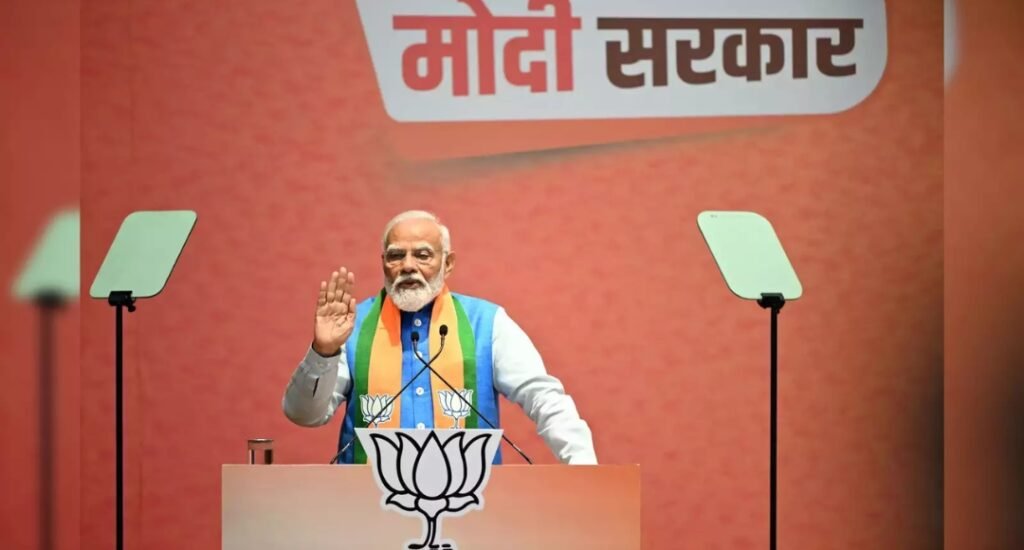India is making remarkable strides toward achieving its renewable energy goals, and the Surya Ghar Yojana stands out as a shining example of this progress. In just nine months, the scheme has facilitated 6.3 lakh solar installations, bringing clean, affordable energy to households across the country. Let’s explore how this ambitious program achieved such impressive results and what it means for India’s energy landscape.
The Genesis of Surya Ghar Yojana
Launched with the vision of promoting solar energy in residential areas, the Surya Ghar Yojana is a flagship initiative by the Indian government. It aims to make solar energy accessible and affordable for the common man. The program aligns with India’s broader goal of achieving 280 GW of solar energy capacity by 2030 as part of its commitment to the Paris Agreement.
The scheme offers financial incentives, simplified procedures, and technical support to households looking to install solar panels. With its focus on sustainability and self-reliance, the initiative has rapidly gained traction among urban and rural populations alike.
Key Factors Driving the Success

1. Subsidized Solar Solutions
One of the critical drivers of the scheme’s success is its attractive financial model. Households are offered substantial subsidies, covering up to 40% of the total cost of solar installation. This reduces the financial burden and makes solar panels a viable option for middle- and lower-income families.
The government’s partnership with state-level agencies ensures that subsidies are disbursed efficiently, fostering trust and confidence among beneficiaries.
2. Streamlined Installation Process
A major pain point in adopting solar energy has been the complexity of installation procedures. Surya Ghar Yojana addresses this by offering a user-friendly, single-window system for approvals and applications. The government has also roped in certified installers, ensuring quality and timely execution of projects.
By minimizing bureaucratic hurdles and promoting transparency, the program has encouraged more households to embrace solar energy.
3. Awareness Campaigns
Awareness is key to adoption, and the government has left no stone unturned in educating people about the benefits of solar energy. Through television ads, social media campaigns, and grassroots-level workshops, the scheme has successfully reached diverse audiences.
These campaigns highlight the cost savings, environmental benefits, and energy independence associated with solar power, making it an appealing choice for households.
4. Focus on Urban and Rural Balance
The Surya Ghar Yojana has a dual focus: catering to the urban population’s high energy demands while also bringing solar power to rural areas with limited grid connectivity. By balancing these priorities, the scheme ensures inclusive growth and maximizes its impact.
Benefits of the Scheme
The Surya Ghar Yojana is not just about numbers; it’s about transforming lives. Here are some tangible benefits realized so far:
- Reduced Electricity Bills: Households with solar panels are saving significantly on electricity costs, providing much-needed financial relief.
- Environmental Impact: By reducing dependency on fossil fuels, the scheme has cut down on greenhouse gas emissions, contributing to a cleaner environment.
- Energy Security: Solar installations empower households to become energy self-sufficient, reducing dependence on erratic grid power.
Challenges Overcome
Implementing a scheme of this scale is no easy feat, and the Surya Ghar Yojana faced its fair share of challenges. These included:
- High Initial Costs: While subsidies help, the upfront investment was still a hurdle for some households.
- Resistance to Change: Convincing people to shift from conventional energy sources to solar required consistent effort.
- Technical Limitations: Ensuring the availability of skilled technicians and quality equipment was essential to the program’s success.
Through innovative strategies and robust execution, the government overcame these obstacles, setting an example for other large-scale initiatives.
Lessons for the Future

The success of the Surya Ghar Yojana offers several takeaways for policymakers and stakeholders:
- Collaboration is Key: The scheme’s partnership with state governments, private players, and NGOs played a vital role in its success.
- Incentives Matter: Financial support encourages adoption and builds public trust.
- Continuous Awareness: Educating people about long-term benefits ensures sustained participation.
The Road Ahead
While the scheme’s achievements are commendable, the journey toward a fully renewable India is far from over. Expanding the program to include battery storage solutions and community solar projects could enhance its impact.
Additionally, encouraging innovations like rooftop solar leasing and net metering will further incentivize adoption. Policymakers must also focus on scaling efforts in remote and underserved regions to ensure equitable growth.
The Surya Ghar Yojana is a testament to India’s commitment to a sustainable future. By reaching 6.3 lakh solar installations in just nine months, the program has set a new benchmark for renewable energy initiatives. Its success lies in its inclusive approach, robust execution, and unwavering focus on empowering citizens with clean energy solutions.
As the scheme continues to grow, it serves as a reminder of the transformative power of renewable energy and the collective effort required to harness it for the greater good.





